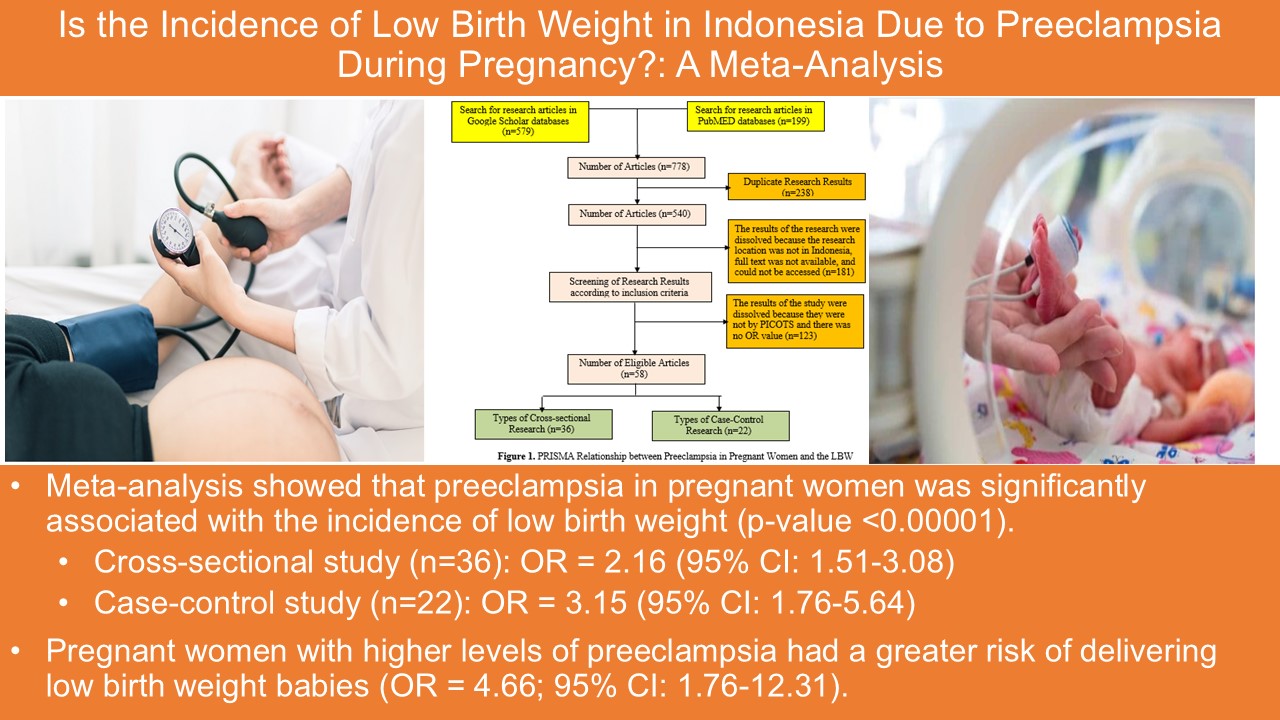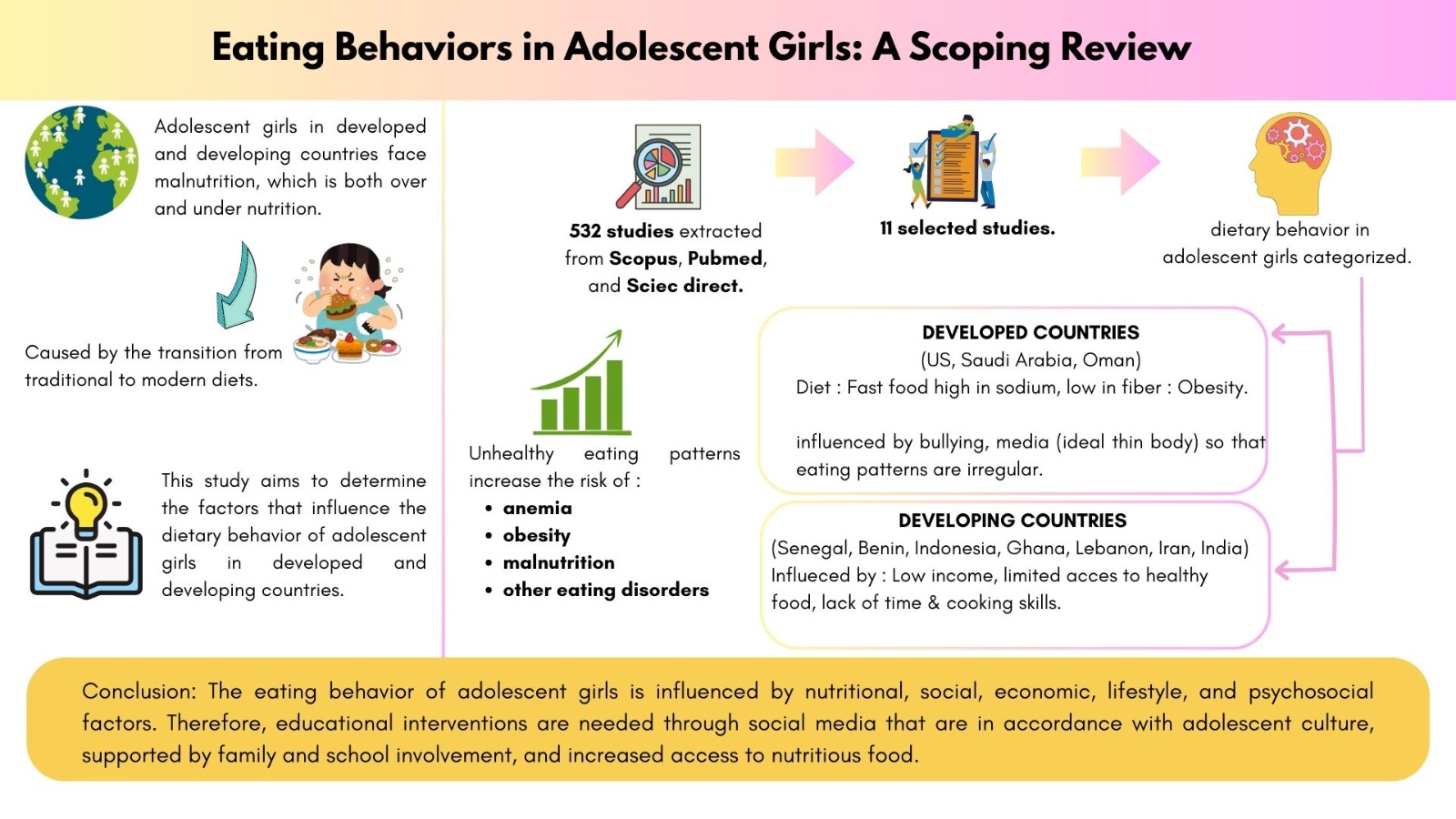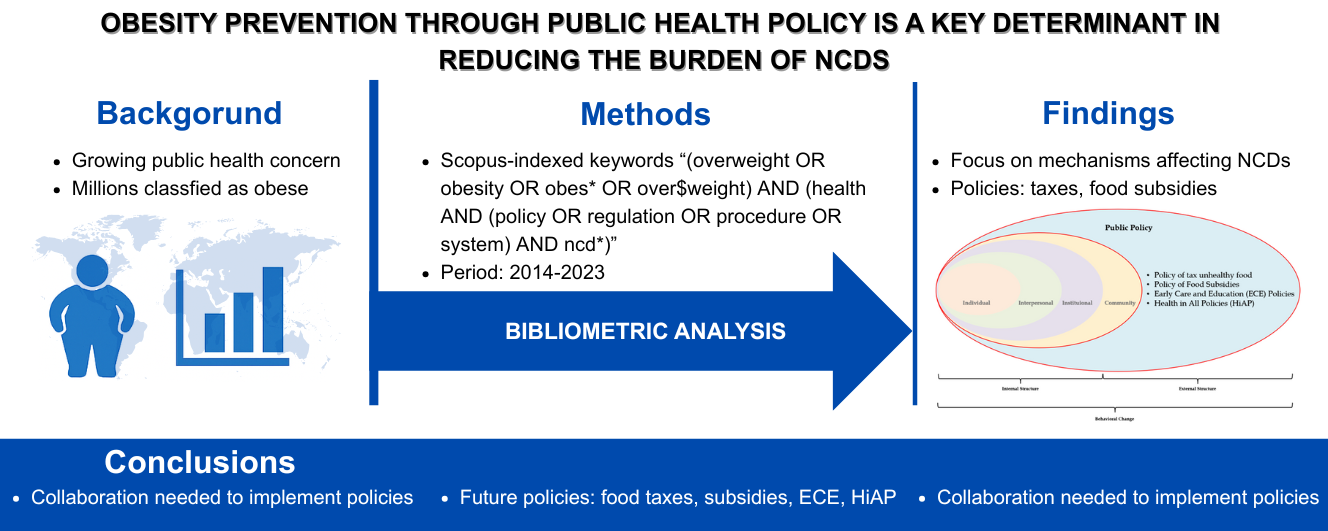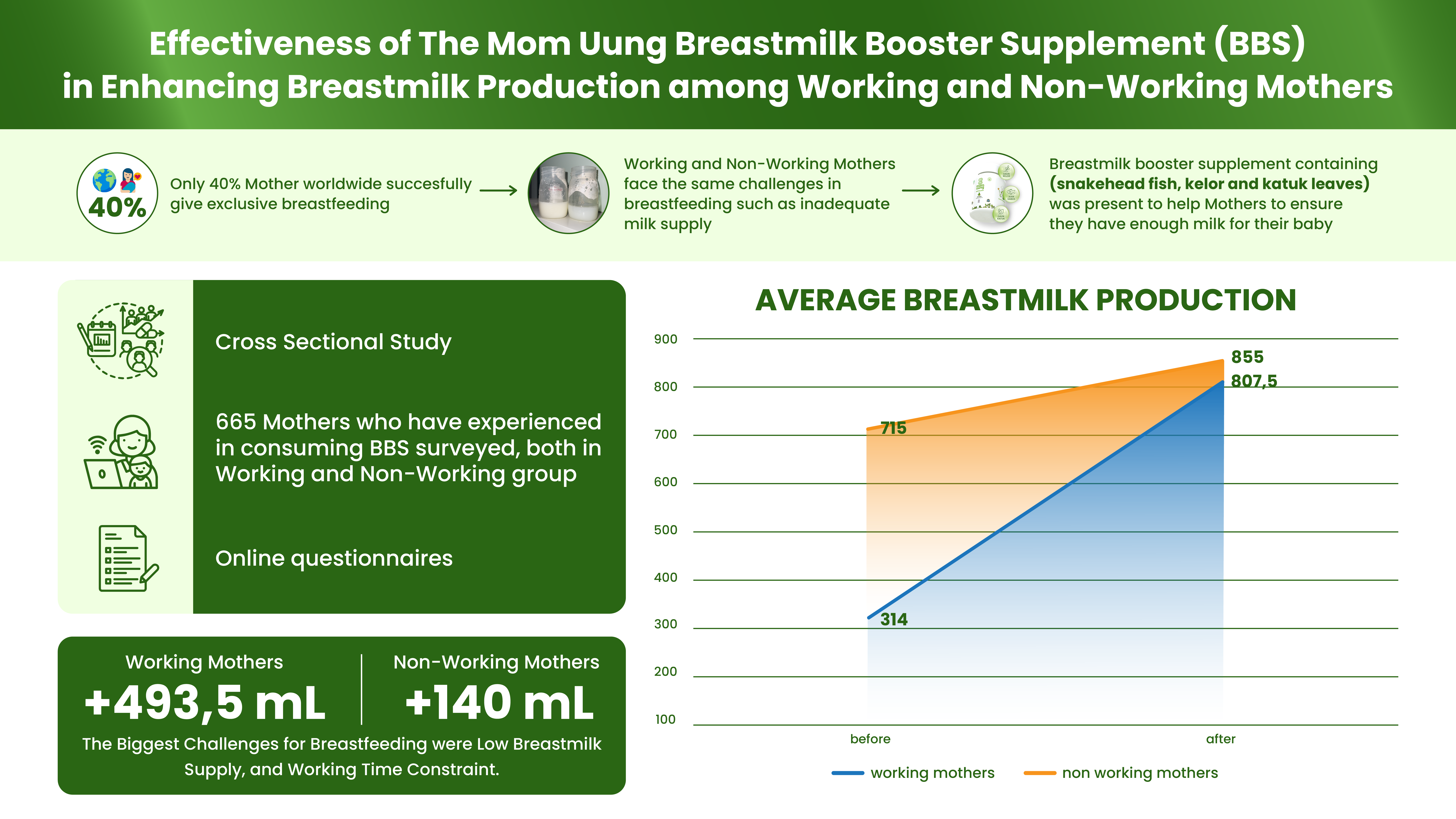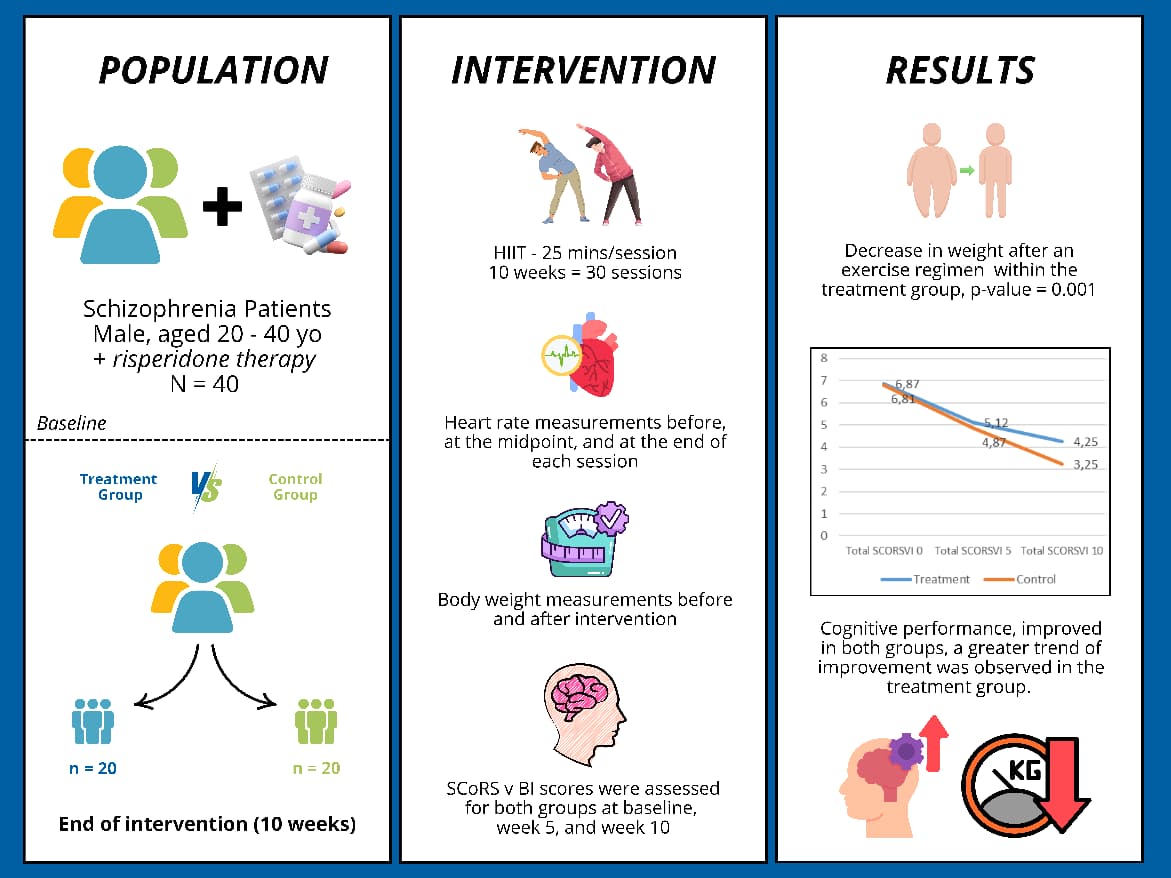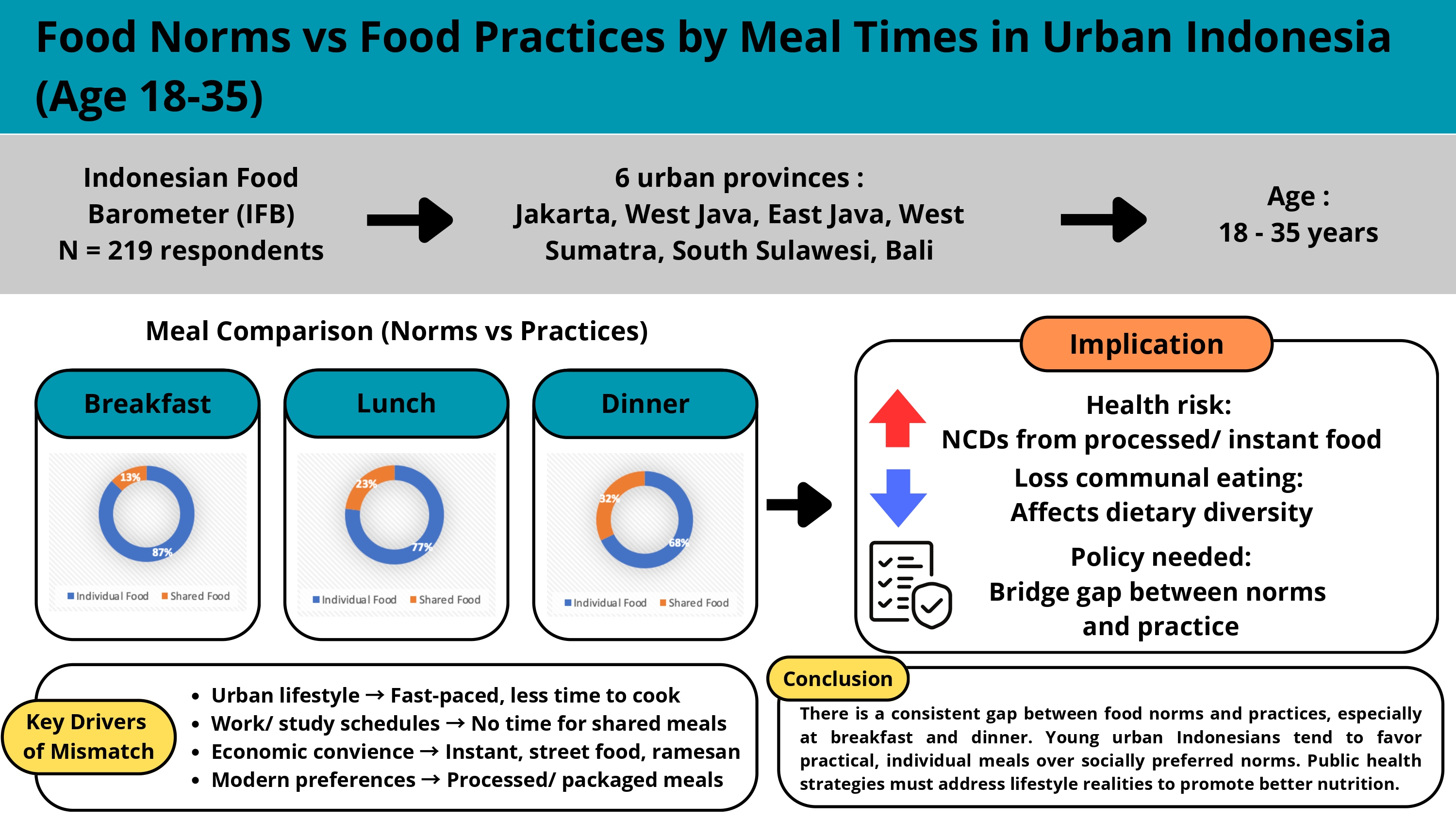Double Burden of Malnutrition among Women of Reproductive Age and Its Associated Factors in Makassar District
Downloads
The double burden of malnutrition, especially on women, continues to increase, including in Makassar City, Indonesia. The prevalence of malnutrition is quite high based on BMI category in the adult female population aged >18 years in Makassar City, namely thin (8.64%), fat (14.33%), and obese (29.75%). This study aims to compare factors related to undernutrition and overnutrition status in women of childbearing age (WUS) in Makassar District. This research is a cross-sectional study of suburban women aged 16–44 years at the Bara-baraya Community Health Center, Makassar District using a quota sampling technique for two months. Anthropometric measurements were carried out to determine nutritional status, calorie and protein intake were measured using a 24-hour recall questionnaire, and a structured questionnaire to determine the characteristics of respondents. The statistical test used is the Chi Square test. The prevalence of undernutrition, normal and overnutrition in the WUS group was 8.3%, 46.9% and 44.8%, respectively. There is a significant relationship between energy intake (p=0.032), dietary diversity (p=0.025), nutritional knowledge (p=0.029), and education (p=0.009) with nutritional status in women of childbearing age. No significant relationship was found between protein intake, occupation, economic status and age with nutritional status among women of reproductive age (p>0.05).
Ainia, O. A. C., & Notobroto, H. B. (2018). Faktor Demografi Wus yang Berhubungan dengan Status Gizi Berdasarkan Lila di Puskesmas Pacarkeling Tahun 2017. Jurnal Biometrika Dan Kependudukan, 7(2), 105–112.
Alam, S., Ansyar, D. I., & Satrianegara, M. F. (2020). Eating pattern and educational history in women of childbearing age. Al-Sihah: The Public Health Science Journal, 12(1), 81. https://doi.org/10.24252/as.v12i1.14185
Amirullah, A., Andreas Putra, A. T., & Daud Al Kahar, A. A. (2020). Deskripsi Status Gizi Anak Usia 3 Sampai 5 Tahun Pada Masa Covid-19. Murhum : Jurnal Pendidikan Anak Usia Dini, 1(1), 16–27. https://doi.org/10.37985/murhum.v1i1.3
Andadari, D. P. P. S., & Mahmudiono, T. (2017). Keragaman Pangan dan Tingkat Kecukupan Energi serta Protein Pada Balita. Amerta Nutrition, 1(3), 172. https://doi.org/10.20473/amnt.v1i3.6242
Fasola, O., Abosede, O., & Fasola, F. A. (2018). Knowledge, attitude and practice of good nutrition among women of childbearing age in Somolu Local Government, Lagos State. Journal of Public Health in Africa, 9(1), 42–46. https://doi.org/10.4081/jphia.2018.793
Hanifah, N. A. A., & Stefani, M. (2022). Hubungan pernikahan usia dini dengan angka kejadian stunting pada bakita di Kelurahan Mekarsari. Jurnal Gizi Ilmiah (JGI), 9(2), 19–26.
Kazaks, A. G., & Stern, J. S. (2013). Nutrition and Obesity: Assessment, Management & Prevention.
Kemenkes RI. (2018). RISKESDAS 2018. Riset Kesehatan Dasar.
Kementerian Kesehatan RI. (2014). Buku Studi Diet Total: Survei Konsumsi Makanan Individu Indonesia 2014. Ministry of Health Republic of Indonesia.
Khusun, H., Ade, L., Wiradnyani, A., & Siagian, N. (2015). Factors associated with overweight/obesity among asults in urban Indonesia. Penelitian Gizi dan Makanan, 38(2), 95–110.
Kusparlina, E. P. (2016). Hubungan antara Umur dan Status Gizi Ibu Berdasarkan Ukuran Lingkar Lengan Atas dengan Jenis BBLR. Jurnal Penelitian Kesehatan SUARA FORIKES, 7(1), 21–26.
Laswati, D. T. (2017). Masalah Gizi Dan Peran Gizi Seimbang. Agrotech, 2(1), 69–73.
Lestari, P. (2020). Hubungan Pengetahuan Gizi, Asupan Makanan dengan Status Gizi Siswi Mts Darul Ulum. Sport and Nutrition Journal, 2(2), 73–80. https://doi.org/10.15294/spnj.v2i2.39761
Martony, O. (2020). Junk Food Makanan Favorit Dan Dampaknya Terhadap Tumbuh Kembang Anak Dan Remaja. Journal of Chemical Information and Modeling, 53(9), 1689–1699.
Melani, V. (2016). Hubungan keragaman konsumsi pangan dan status gizi wanita usia 19-49 tahun di Provinsi DKI Jakarta (analisis data Riskesdas 2010). Nutrire Diaita, 8(2), 80–84.
Ningrum, S. T., Sinaga, T., & Nurdiani, R. (2023). Pengetahuan Gizi, Perubahan Kebiasaan Makan dan Gaya Hidup, Serta Status Gizi Mahasiswa Saat Pandemi Covid-19. Jurnal Ilmu Gizi Dan Dietetik, 1(3), 156–164. https://doi.org/10.25182/jigd.2022.1.3.156-164
Nugraha, F., Relaksana, R., & Siregar, A. Y. (2021). Determinan Sosial Ekonomi Terhadap Berat Badan Lebih Dan Obesitas Di Indonesia: Analisis Data Ifls 2014. Jurnal Ekonomi Kesehatan Indonesia, 5(2), 17–28. https://doi.org/10.7454/eki.v5i2.4124
Paramata, Y., & Sandalayuk, M. (2019). Kurang Energi Kronis pada Wanita Usia Subur di Wilayah Kecamatan Limboto Kabupaten Gorontalo. Gorontalo Journal of Public Health, 2(1), 120. https://doi.org/10.32662/gjph.v2i1.390
Peraturan Menteri Kesehatan No. 28 Tahun (2019). Tentang Angka Kecukupan Gizi Yang Dianjurkan Bagi Bangsa Indonesia. Rabit : Jurnal Teknologi Dan Sistem Informasi Univrab, 1(1).
Rachmi, C. N., Li, M., & Alison Baur, L. (2017). Overweight and obesity in Indonesia: prevalence and risk factors”a literature review. Public Health, 147, 20–29. https://doi.org/10.1016/j.puhe.2017.02.002
Rai, R. K. (2015). Factors associated with nutritional status among adult women in urban India, 1998-2006. Asia-Pacific Journal of Public Health, 27(2), NP1241–NP1252. https://doi.org/10.1177/1010539512450606
Safitri, D. E., & Rahayu, N. S. (2020). Determinan Status Gizi Obesitas pada Orang Dewasa di Perkotaan: Tinjauan Sistematis. ARKESMAS (Arsip Kesehatan Masyarakat), 5(1), 1–15. https://doi.org/10.22236/arkesmas.v5i1.4853
Septiani, S., Irfiyanti, I., Hai, T. T., Khusun, H., Wiradnyani, L. A., Kekalih, A., & Sahanggamu, P. D. (2021). Food Insecurity Associated with Double-Burden of Malnutrition among Women in Reproductive Age in Ciampea Sub-district, Bogor, West Java. Indonesian Journal of Public Health Nutrition, 1(2), 21–31. https://doi.org/10.7454/ijphn.v1i2.4805
Somasundaram, N., Ranathunga, I., Gunawardana, K., Ahamed, M., Ediriweera, D., Antonypillai, C. N., & Kalupahana, N. (2019). High Prevalence of Overweight/Obesity in Urban Sri Lanka: Findings from the Colombo Urban Study. Journal of Diabetes Research, 2019:2046428. doi: 10.1155/2019/204642https://doi.org/10.1155/2019/2046428
Suryani, D., Sabrina, Y., Cholidah, R., Ekawanti, A., & Andari, M. Y. (2017). Studi Status Gizi, Pola Makan serta Aktivitas pada Anak Sekolah Dasar di Kota Mataram. Unram Medical Journal, 6(1), 14–19. https://doi.org/10.29303/jku.v6i1.104
UNDP. (2015). MIllennium Development Goals (MDGs). United Nations.
UNICEF. (2017). Uganda Situation Report.
UNICEF. (2020). Uganda Country Office Annual Report 2020.
World Health Organization. (2015). Body mass index (BMI).

This work is licensed under a Creative Commons Attribution-NonCommercial-ShareAlike 4.0 International License.
- MEDIA GIZI INDONESIA Journal is the copyright owner of all materials published on this website.
- The formal legal provisions for access to digital articles of this electronic journal are subject to the terms of the Creative Commons Attribution-NonCommercial-ShareAlike license (CC BY-NC-SA 4.0), which means that MEDIA GIZI INDONESIA Journal and readers reserve the right to save, transmit media / format, manage in database, maintain, and publish articles as long as it continues to include the name of the Author.
- Printed and published print and electronic manuscripts are open access for educational, research and library purposes. In addition to these objectives, the editorial board shall not be liable for violations of copyright law.


2.png)















